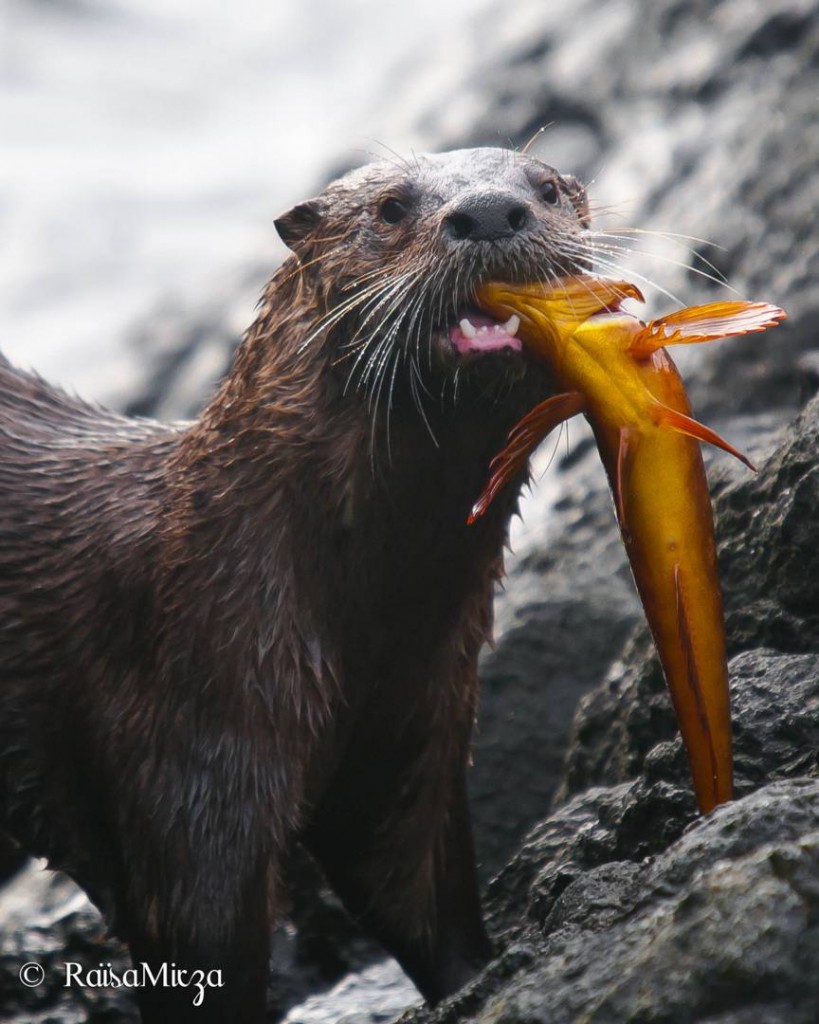
This otter has just caught a female kelp greenling. I consider this one of the best ecological pictures of the year at Race Rocks–Photo by Raisa Mirza Nov 4 2010
Location of River Otters at Race Rocks:
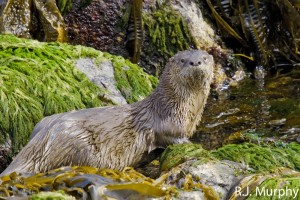
Ryan took these photos of a rover otter in March 2009. The otter was coming out of the water on the East side of great Race.
The river otter Lontra canadensis, formerly Lutra canadensis, does not really have a natural habitat at Race Rocks because they usually inhabit small bays and inlets around Vancouver Island. However they have in the past made homes in holes under man-made paths and buildings at Race Rocks. They currently have made a home under a pile of rocks formed when the Coast Guard blasted the island to make a helicopter pad in the late seventies. Most of the other man-made habitats have been eliminated. Interesting local ecology/behaviour/adaptations:
The river otter is the largest of the family Mustiladae. It is a metre or more in length with around a third of its body taken up by its tail. It has webbed feet and claws which are useful for use in the marine and terrestrial environments in which they live.
They have thick fur with long hairs enabling them to survive low temperatures. Ryan took this image of otter tracks at Race Rocks in December 2008 when we had a few weeks of cold weather and the snow actually stayed for a few days.
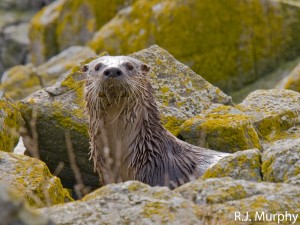
See more photos of Ryan Murphy on his Flickr website:
When diving in murky waters through which they cannot see properly they use their whiskers to detect prey. River otters are able to communicate with each other using chirps, whistles, chatters, chuckles, screams and growls.They are one of the most playful species constantly sliding on the ground, chasing each other.
Domain: Eukarya
Kingdom: Animalia
Phylum: Chordata
Class: Mammalia
Order: Carnivora
Family: Mustelidae
Subfamily: Lutrinae
Genus: Lontra
Species: canadensis pacifica (Schreber, 1977)
Common Name: River Otter
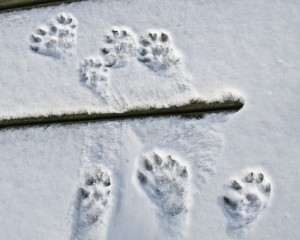 They have thick fur with long hairs enabling them to survive low temperatures. Ryan took this image of otter tracks at Race Rocks in December 2008 when we had a few weeks of cold weather and the snow actually stayed for a few days.
They have thick fur with long hairs enabling them to survive low temperatures. Ryan took this image of otter tracks at Race Rocks in December 2008 when we had a few weeks of cold weather and the snow actually stayed for a few days.
When diving in murky waters through which they cannot see properly they use their whiskers to detect prey. River otters are able to communicate with each other using chirps, whistles, chatters, chuckles, screams and growls.They are one of the most playful species constantly sliding on the ground, chasing each other.
Distribution elsewhere:
They occur along the Coast of Vancouver Island, often frequenting bays and estuaries and coastal marshes. The closest area where they are regularly found is Pedder Bay. There, we frequently see them on the college docks and on the southern shoreline. . Along streams and rivers in most of midwest and southwest USA (except Hawaii) they are common. Their population and density however varies with location. They can become a pest when they move onshore under buildings near the water.Their dead food and droppings create a disagreeable odor. They also can be vicious when cornered by humans or dogs.
Feeding particulars:
The river otter usually feeds on quite a variety of organisms, fish (herring mostly), seagulls (baby ones and eggs), crabs and shrimp. At Race Rocks they revert to birds and their eggs when the supply of herring is low. In July,1998 they wiped out the nests of black oyster catchers. They were also a threat to guillemot nests and were seen digging away rocks to get to the nests. Whether the pigeon guillemot escaped or not is not known. Glaucous winged gull chicks are also victims. Man made habitat such as space under walkways and under buildings were removed in 2000 resulting in fewer occurrences of them on the islands.
Reproduction:
River otters usually mature at 2 years of age. Females usually get pregnant after three years. Males breed at around 5 years. See this slide show. They have litters of 1-6 with the usual amount being two or three children (kits)per mother. Female river otters have the ability to delay implantation. The young usually stay a year in the womb with a 60 day gestation period. They are quite helpless at birth and are blind. They open their eyes at around 3 weeks. The kits can take care of themselves at 5 or 6 months. However the family usually sticks together for an extra 2 months or until another litter is born.
The river otter breeds in March-April and give birth in late winter/early spring.
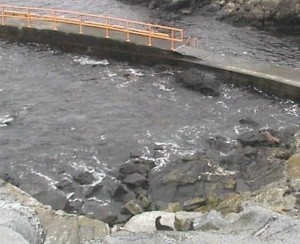 This photo was taken in February, 2008
This photo was taken in February, 2008
on the remote camera 5 by Pam Birley. The otter is seen coming out of the rock pile and moving over to the water. Below is a series of images taken by PB on February 29, 2008.
Other Posts on River Otters at Race Rock
Other posts on the Class Mammalia at Race Rocks
 The Race Rocks taxonomy is a collaborative venture originally started with the Biology and Environmental Systems students of Lester Pearson College UWC. It now also has contributions added by Faculty, Staff, Volunteers and Observers on the remote control webcams. Garry Fletcher2003 The Race Rocks taxonomy is a collaborative venture originally started with the Biology and Environmental Systems students of Lester Pearson College UWC. It now also has contributions added by Faculty, Staff, Volunteers and Observers on the remote control webcams. Garry Fletcher2003 |
